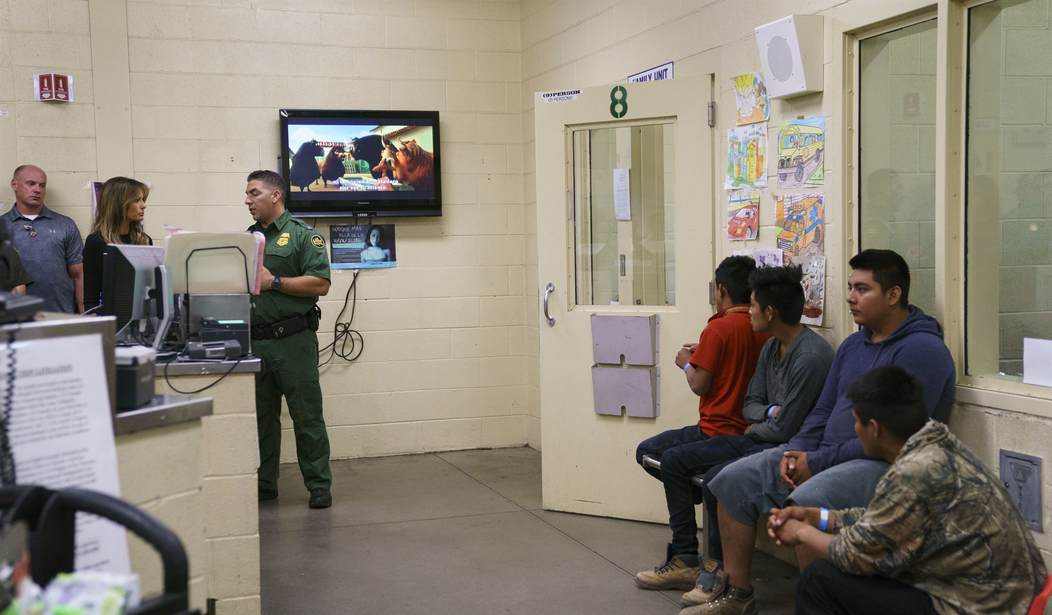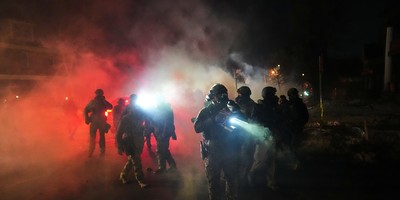Earlier this month, I spent a week in Texas touring family immigration processing centers operated by private sector contractors under contracts with U.S. Immigration and Customs Enforcement (ICE). I know that some of what I saw might be difficult for hardened critics to believe. They've painted a picture in their own minds and for others of conditions based on politically-motivated rhetoric rather than facts and first-hand observation on the ground. Here’s what I saw:
Children weren’t in cages. They were in classrooms and on playgrounds.
While touring a facility that was opened under the Obama administration to house migrant families together, I saw children eagerly listening to story time and doing science experiments. They were learning with the help of computers, tablets, and smart boards. From all that they’ve gone through to get there, the kids looked engaged and comfortable. They freely walked throughout the campus with their mothers on foot or were in strollers provided by the facility. There were toys and a library with over 20,000 books in a variety of languages. Kids were visited by Santa Claus on Christmas and got cupcakes on their birthdays. You can’t coach the kind of genuine laughter and smiles I saw in the places that weren’t even part of the tour.
Nobody was drinking out of toilets, but there is an all-you-can-eat salad bar.
It might make a catchy headline, but it’s simply not reality. Everywhere I went, there was plenty of fresh water – in bottles, coolers, and water fountains.
At these facilities, residents get three hot meals a day, and the parents and kids have access to free milk, fresh fruit, and other snacks at all times in their living quarters. Many items like rice, beans, salad, and tortillas are all-you-can-eat. If a mom needs formula, she gets it for free. If residents have religious or medical dietary restrictions, they’re accommodated. They even poll the residents to see what types of food and regional cuisines they would prefer. The dining areas were clean and orderly, and the food smelled great (and I’m picky).
Recommended
Health, and particularly mental health, was clearly a priority.
No matter your position on immigration, we can all agree that many of the people crossing our borders have experienced unimaginable trauma. At the centers I toured, residents are immediately screened at intake for conditions like PTSD, depression, and anxiety. I noticed signs posted in the dormitories (in multiple languages) listing the symptoms of these problems and imploring residents to seek help from their on-site psychologist. One center even had a therapy dog on hand to assist residents.
At these facilities, there are multiple “urgent care” type centers where patients are seen the same day for ailments. The medical centers were filled with staff – the doctors and nurses are actually federal employees, not contractors. There were no long lines of patients waiting to be seen. Additionally, residents have access to dental care and vaccinations, and for many, it’s the first time they’ve ever had access to these kinds of resources. As for personal hygiene supplies, residents have unlimited free access to essential items like toothpaste, deodorant, and feminine products.
The staff keep up the facilities – not the residents.
One of the first things that I noticed in these family processing centers was that there were staff members everywhere, including a number doing maintenance and cleaning work. The daily fresh linens residents receive or the prepared food? The facility takes care of that.
Only if they want to earn money – which they often either send home or save up for the next leg of their journey – residents can volunteer to assist the center with light sweeping, dusting, and other minor cleaning tasks. Congress first established these voluntary work programs in the 1950s. All of the money goes directly into residents’ accounts, and contractors are required to run the program to benefit the residents, not themselves. There’s plenty of staff to do the work, but these programs are popular with residents who want to stay busy and put some money in their pocket upon release.
Private sector does not mean no oversight. Quite the contrary.
A common misconception about contractor-operated facilities is that their affiliation with for-profit companies means that they can cut corners with no oversight. One visit to a family processing center will quickly refute these notions. There are watchful eyes everywhere, including the dozens of federal ICE personnel working permanently on-site, company and independent auditors, legal and humanitarian advocates, chaplains, priests and other religious volunteers, and state health and child welfare inspectors. Moreover, the very legal organizations that are often advocating for these facilities’ abolition are given constant access to meet with the residents confidentially.
The bottom line is this: the immigration debate is heated enough without false distortions about the type of treatment contractors provide. After my visits, I am confident that the systems established across multiple administrations – Democrat and Republican – are today delivering humane, respectful, and dignified treatment to families caught up in the U.S. immigration system.

























Join the conversation as a VIP Member